taman sari.
|
These stories came from a few weeks ago, when our internet access was slow and uploading was a frustrating mission: In the old days (and that’s dating only to the year 1755 and on) the Sultan would come to this place, where his concubines and children would bathe. |

|
|
He would stay in this room up in the tower, looking down this window to the two pools in front of him where his concubines and children would bathe, and throw out flowers to the concubines that he would want to spend more time with. |

|
|
The ones who got the flowers would move to the smaller pool to the other side of this tower. At least that’s what we overheard from the tour guide of a group next to us. The tour guides tried to talk Japanese to me, only to be talked back in Indonesian. |

|
|
The bathhouse used to be surrounded by water. An organization called the Jogja Heritage Society published a map in which we could see how different the surrounding area was. This is how it looks like now, looking to the North. In clear weather you’re supposed to be able to see the Mount Merapi. |

|
|
And to the South – the white stone buildings, partly ruined, are part of the bathhouse. |

|
|
Then there was this old well, said to be the place where the nine missionaries used to teach Islam to the locals. |
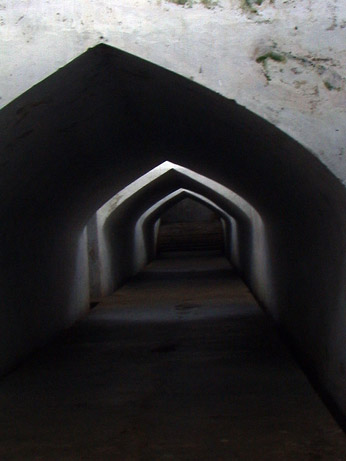
|
|
Snip. |
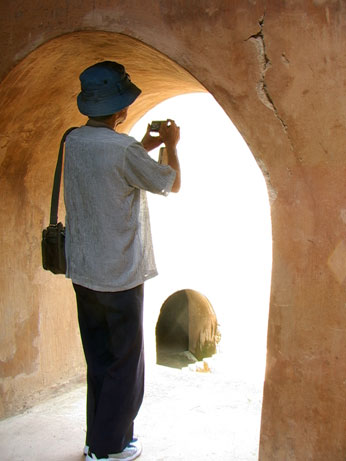
|
|
Snap. |
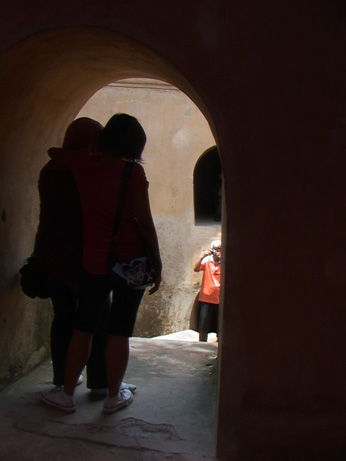
|
|
Snoop. |

|
|
People believe that the well is connected to the South Sea, where a goddess called Nyai Roro Kidul resides. She guards the South Sea, and quite moody, but willing to be pleased. The North-South city axis is based on this belief. North to the volcano and South to the sea. The Sultan is in the middle and protecting the people from the angry gods and goddesses. Some people say they still feel safe as long as they’re inside the walls of Jogja – some says the walls don’t mean anything anymore for them. |
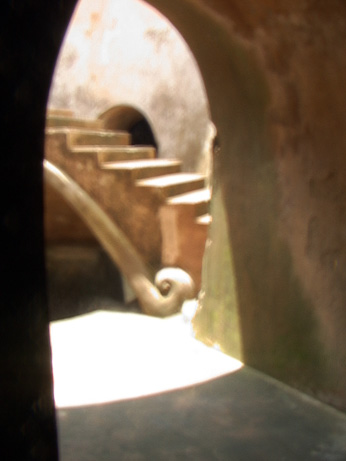
|
|
The building was somewhat circular and around the well there were cave-like rooms. One of them seemed like a toilet. |

|
|
Not, however, a modern one like this one (even when ruined): |

|
|
Nowadays people do pre-wedding videos and photography here. Imagine the bride stepping down to the platform – there used to be a hole right at the middle of the platform and you could see down to the well. They closed the hole only a few years ago. |
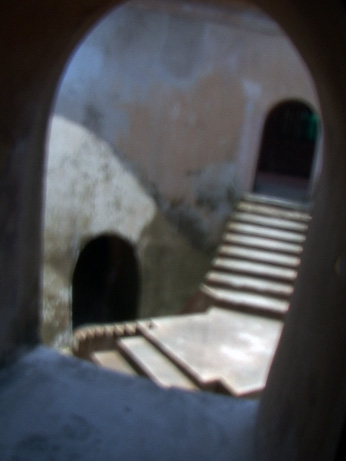
|
|
Pelan = Being slow. |
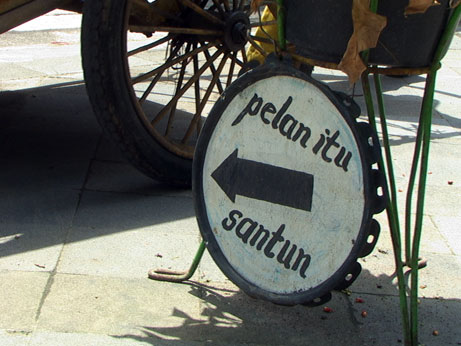
|
|
And I wonder whether Mr. Citromardowo, Djokomoelyo heir of M. G. Honggowacono might have also heard about my mother passing out in the church when she was still a music student in Jogja back in the 1960s. |
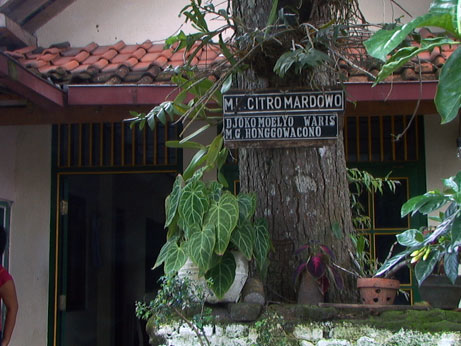
|
|
More later. Off to lunch. |

Comments are closed, but trackbacks and pingbacks are open.